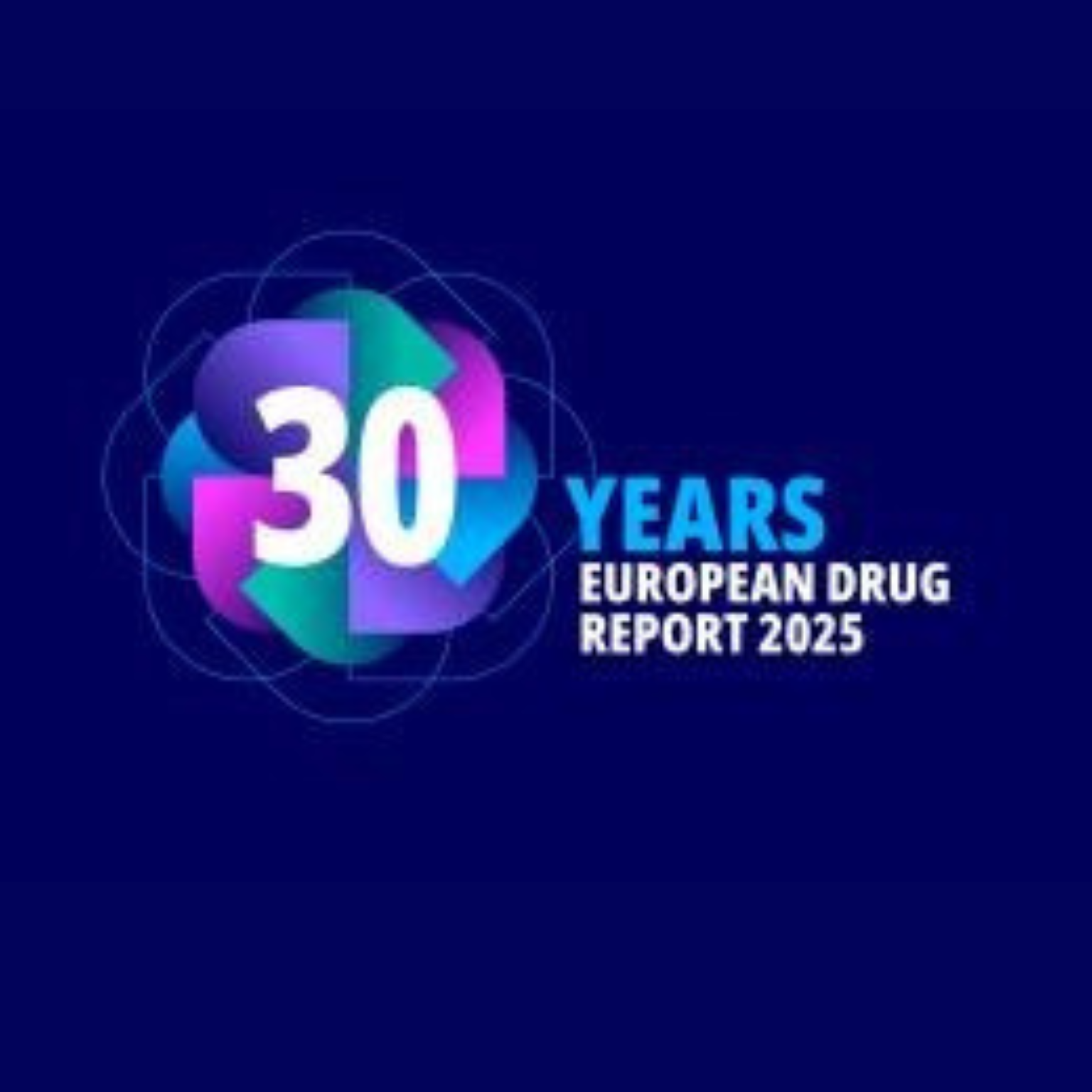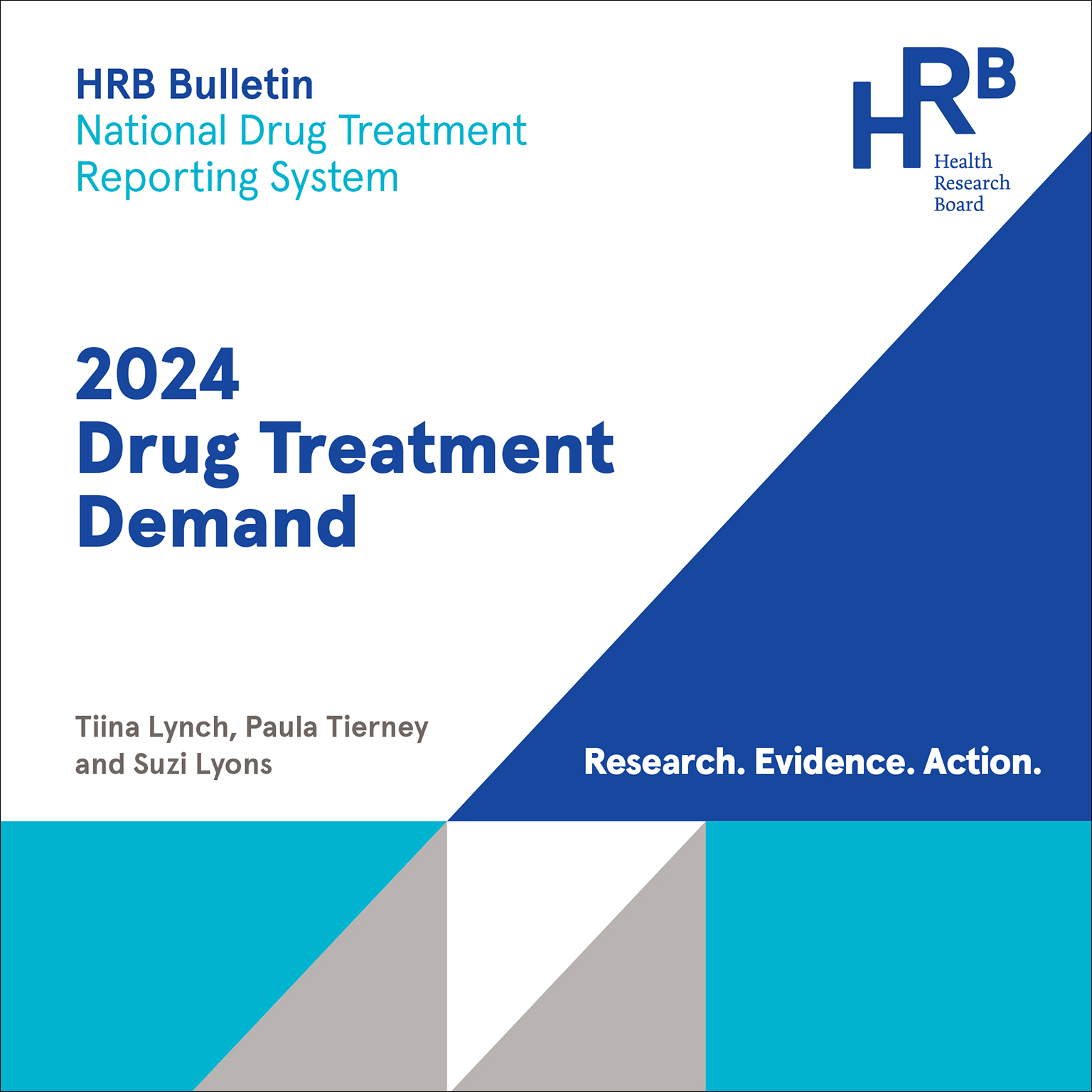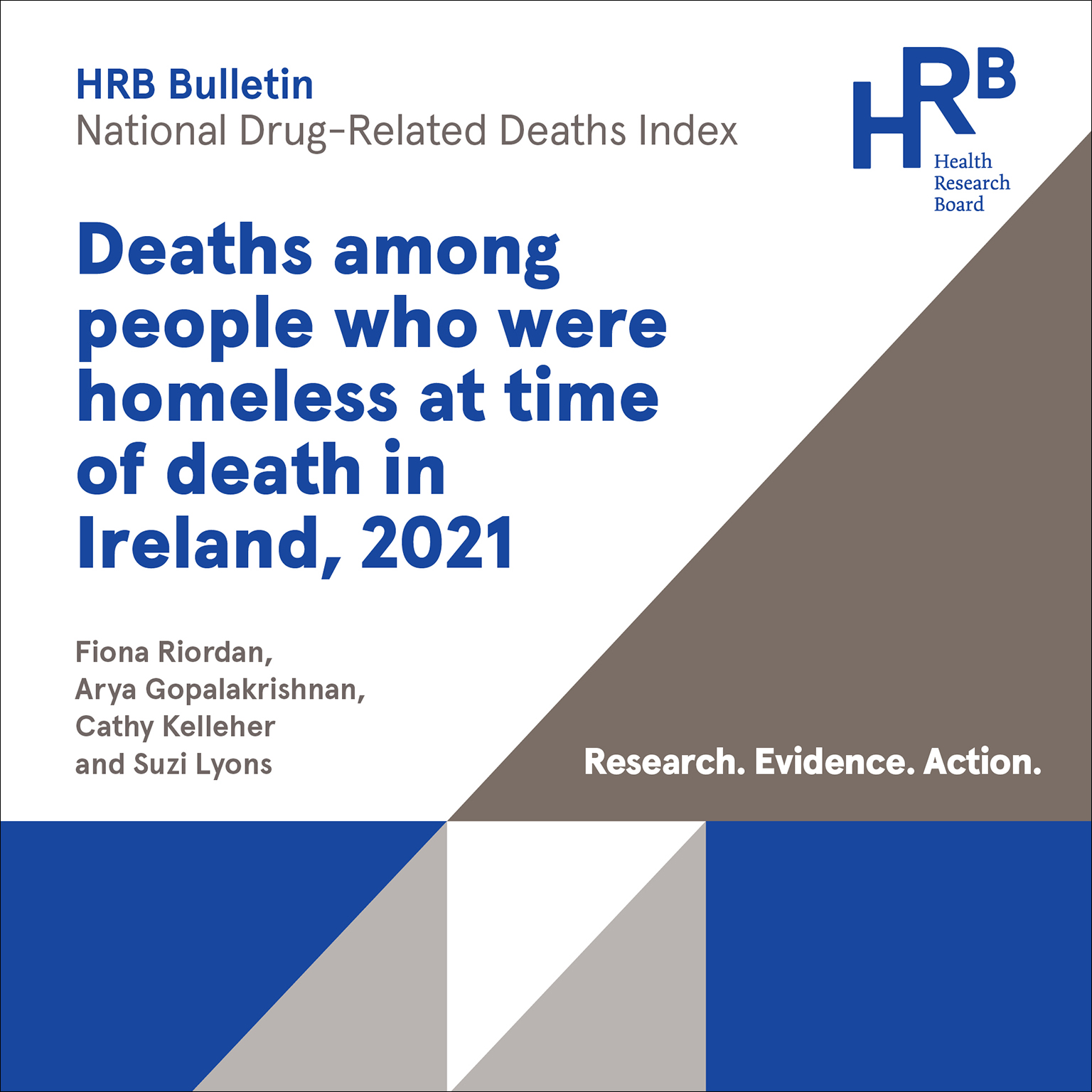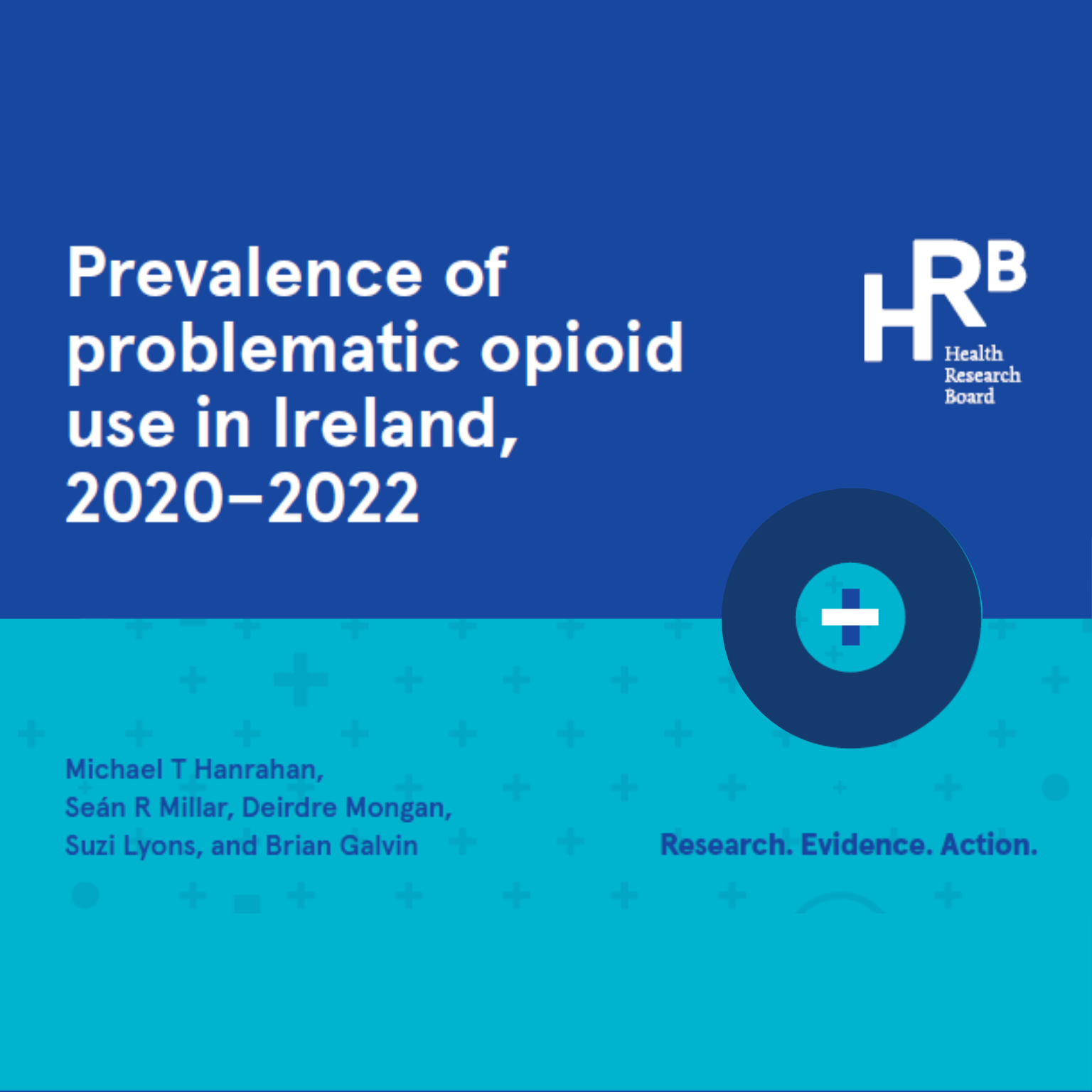New HRB overview presents latest research on alcohol consumption, harm and policy in Ireland
A new report from the Health Research Board (HRB) presents an overview of alcohol consumption and harm in Ireland, analysing trends and assessing the impact of policy changes over time.
7 min read - 15 Apr 2021
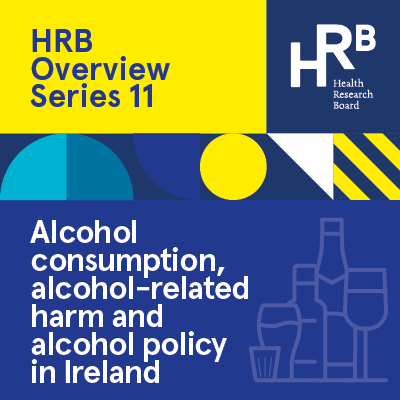
Key findings from the report include:
- Continued high levels of consumption and hazardous drinking habits
- Increasing demand on hospital services due to alcohol-related harm
- The importance of minimum unit pricing as a tool to reduce harmful consumption
- Initial insights into how drinking patterns have changed during the COVID-19 pandemic
Alcohol consumption remains high
Consumption figures hold steady at high-risk levels
The HRB has found that while alcohol consumption levels in Ireland have plateaued since 2013, people’s consumption remains significantly higher than the Government’s 2020 target of no more than 9.1 litres of pure alcohol per person a year. In 2019, on average every person in Ireland aged 15 and over drank 10.8 litres of pure alcohol a year – the equivalent of either 40 bottles of vodka, 113 bottles of wine or 436 pints of beer. Given one in four people in Ireland don’t drink at all, actual consumption rates among those who do drink would be much higher than this.
Ireland ranks 9th among OECD countries in terms of alcohol consumption and 8th in the world when it comes to monthly binge drinking, defined as consuming more than six standard drinks in one sitting.
“While we have not seen a rise in consumption in recent years, the amount we drink and in particular how we drink continues to put us at risk of serious harm,” explains Dr Deirdre Mongan, Research Officer at the HRB and co-author of the report.
“Binge drinking is still widespread, especially among young people. Almost one in four men and one in ten women report that over the past year they have drunk more in a single sitting than would be suggested as a maximum weekly limit by low-risk guidelines. However, it appears many of us are unaware that our habits may be harmful: more than half of Irish drinkers are classified as hazardous drinkers, yet 74% consider themselves to be a light or moderate drinker.”
Hazardous drinking across age groups
The report provides a number of insights into how consumption patterns vary between age groups and genders. For example:
- Males aged 25-34 years are more likely to be classed as hazardous drinkers and are more likely to present with alcohol-related self-harm and suffer death due to poisoning.
- Older adults aged 65 and over tend to drink less; however, of those who do drink, one-third are hazardous drinkers, with over 40% of men over 65 engaging in monthly binge drinking.
- Three in five drinkers over 60 years who take medication that interacts with alcohol have reported that they continue to drink while on such medication.
Changes to alcohol consumption during the COVID-19 pandemic
The report includes an analysis of preliminary data on alcohol consumption during the COVID-19 pandemic over the past year. Data released by Revenue in March 2021 has shown that consumption decreased by 6.5% during this time – a relatively small decline considering that pubs have been closed for the majority of the year. Beer consumption decreased by 17% in 2020 compared to 2019, while wine consumption increased by 12% in the same period.
Dr Mongan comments: “While it is still too early to tell the full impact of the change in drinking habits due to the pandemic, all signs point to substituting drinking in on-trade premises with drinking at home. This is concerning in particular for households with children, as research shows that children exposed to parental drinking at high levels are vulnerable to adverse outcomes.”
Alcohol-related harm leads to three deaths per day and growing burden on hospital system
The report’s findings underline the significant harm that alcohol continues to have on the health of people living in Ireland. 1,094 alcohol-related deaths were recorded in 2017 – an average of 3 deaths per day. Over 70% of those who died of alcohol-related causes were under 65 years old, highlighting the high levels of premature mortality associated with alcohol.
Figures on hospital discharges (excluding emergency department data) reveal the increased burden placed on the healthcare system due to alcohol-related conditions over the past two decades:
- The number of discharges from hospital that relate specifically to alcohol increased from 9,420 in 1995 to 18,348 in 2018 – an increase of 94.8%.
- Bed days for alcohol-related conditions increased by 216%, from 56,264 in 1995 to 177,892 in 2018.
- The length of stay for alcohol-related conditions increased by 71.6%, from a mean of 6.0 days in 1995 to a mean of 10.3 days in 2018 – indicating that presentations of alcohol-related conditions may be becoming more complex and taking longer to treat.
- The number of discharges for alcoholic liver disease reached 3,496 in 2018.
- Alcohol was associated with peaks in hospital attendance for self-harm at night, weekends and on public holidays, with alcohol-related self-harm presentations accounting for 30% of all self-harm cases in emergency departments.
Impact of alcohol consumption on young people
The report states that over 82% of schoolchildren have consumed their first alcoholic drink by age 17, with the proportion of children reporting to have been ‘really drunk’ on at least one occasion ranging from 5% of 13-year-olds to 62% of 17-year-olds. Parents were the most common source of alcohol: 35% of 16-year-olds reported getting alcohol from their parents; 19% at a pub, bar or club; and 14% at supermarket, shop or off-license.
Speaking about the trends, Dr Mongan says: “Data on drinking habits among young people shows that the average boy aged 17 is more likely to drink beer and to purchase it in pubs or bars, while the average 17-year-old girl is more likely to drink alcopops and to get their alcohol from their parents.”
The report also investigates how young people are impacted by the drinking habits of their parents. Almost one-third (32%) of children in Ireland live with at least one parent who is either a regular binge drinker (27%) or dependent on alcohol (5%). One in six carers (16%) reported that children for whom they had parental responsibility experienced harm as a result of someone else’s drinking.
Positive findings: abstainers and delayed alcohol initiation
The report includes a number of positive findings. One in four (25%) Irish people report not drinking alcohol at all in the past year, compared with abstinence rates in England and Scotland of 18% and 16% respectively. Moreover, there has been a continuous decrease in the percentage of schoolchildren who drink alcohol or report having been drunk on at least one occasion, in particular among 13-15-year-olds.
“This is an encouraging finding, as this group is particularly vulnerable to experiencing alcohol-related harm,” comments Dr Mongan. “However, it is important to note that we have not seen a similar trend in older age cohorts, with little change apparent in the drinking patterns of 17-year-olds for example.”
Implications for policy: full implementation of Public Health (Alcohol) Act an important next step
In line with the HRB’s role of delivering evidence to inform Irish health policy, the report evaluates recent policy developments in light of the findings presented. The most significant policy change since the publication of the previous report in 2016 is the introduction of the Public Health (Alcohol) Act in 2018. The main provisions in the Act include minimum unit pricing (MUP), structural separation of alcohol products in mixed retail outlets, restrictions around alcohol advertising, and labelling of alcohol products.
“Our findings indicate that for the Alcohol Act to have a real impact, it will be important to implement all measures, including Minimum Unit Pricing,” remarks Dr Mongan. “Irish data shows that the heaviest drinkers buy the cheapest alcohol. Minimum Unit Pricing is designed to target the heaviest drinkers who seek the cheapest prices, which means it can have the greatest effect among those who experience the most harm.”
The report also points to international evidence affirming the capacity of MUP to reduce consumption of alcohol as well as the burden of alcohol-related harm.
The report is set to provide important evidence support for the work of the Public Health Alcohol Research Group, tasked with evaluating the Public Health (Alcohol) Act.
“By continuing to monitor developments in alcohol consumption and harm, the HRB can supply valuable data in support of future policy to help reduce harm,” Dr Mongan concludes. “The value of carrying out these reviews over time is that we can evaluate the impact of changes in legislation, supporting evidence-based policy making in this important area.”
ENDS
For more information, contact:
Gillian Markey, Communications Manager: gmarkey@hrb.ie / 087 2288514
The full report is available for download from the HRB website. Download full report.
7 min read - 15 Apr 2021
